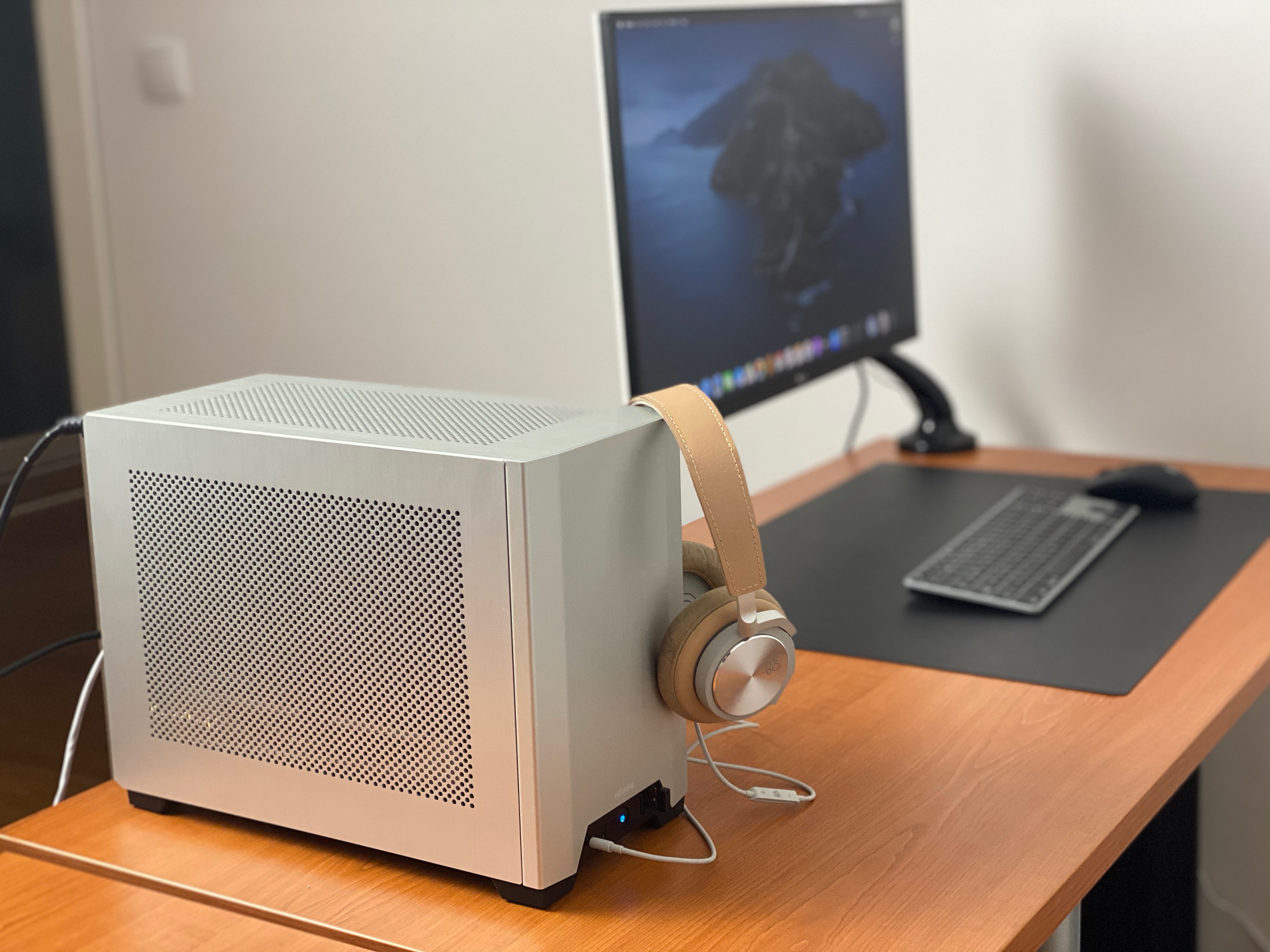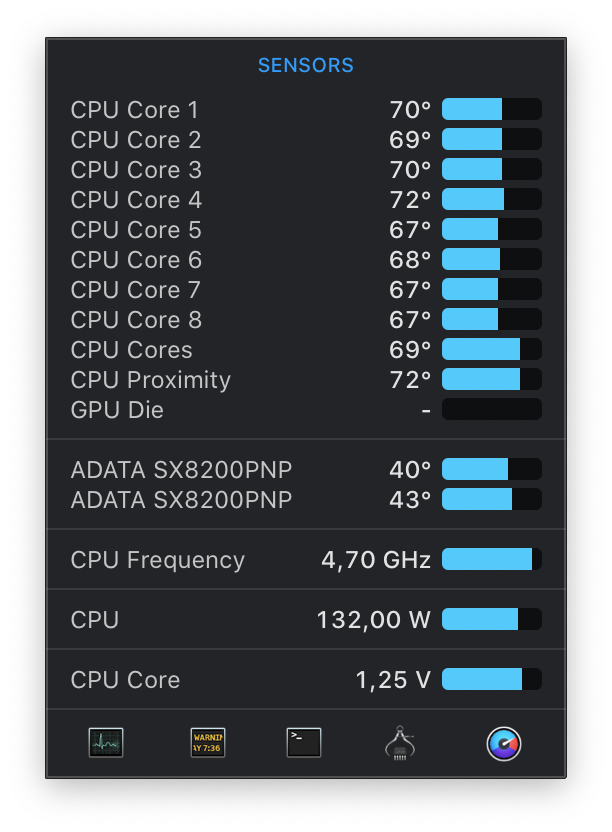hMac 2020
It flies.
As I wrote previously, I planned to buy iMac 27in whenever Apple refreshed it. They did and the config that worked for me is the base 27in model with 8-core CPU and 1TB SSD (I planned to upgrade memory myself). That configuration is ~€3.200 in Europe but here in Serbia it turned out to be ~€3.800. Mac prices were always much higher here but this one particularly irked me.
I investigated the possibility of building it myself then, using the 10th-gen Intel CPUs for maximum compatibility. Few good souls already did all the research I needed thus last month I went on a shopping spree for components.
- Intel i7-10700K 3.8GHz 8-core CPU
- ASRock Z490 Phantom Gaming ITX/TB3 motherboard
- Noctua NH-U9S CPU cooler
- Another Noctua NF-A9 PWM fan for the CPU cooler
- NCASE M1 V6.1 chassis (silver)
- Noctua NF-A12x25 PWM case fan
- LG 27UL650W 4K HDR monitor
- Artec Home Single Desk monitor mount (no idea who actually manufactures this)
- Corsair SF600 Platinum SFX PSU
- Corsair Vengeance LPX 32GB DDR4 DRAM 3200MHz
- Sapphire Nitro+ RX 5500 XT 8G SE graphics card
- XPG SX8200 Pro NVMe SSDs in 1TB (for macOS) and 512GB (for Windows)
- Space Gray Matias Wireless Aluminium Tenkeyless keyboard
- Logitech G305 mouse
I replaced the WiFi/Bt card on the motherboard with Fenvi’s 94360CD-based card (Option 1 on my older post) which gave me perfect out of the box support for WiFi and Bt in macOS. ASRock’s Z490 board was the only ITX option that did not use Intel’s CNVi technology thus making the card switch technically possible.

The final cost: ~€2.000. Big item I’m missing is that beautiful 5K panel but this 4K will do. Performance is just amazing, marginally better than equivalent iMac 2020 model for almost half the cost. Runs super silent most of the time and with good CPU temps ~70ºC under full load.
My previous time investment to learn how OpenCore works paid off big time. I followed OpenCore’s Comet Lake setup guide but using iMacPro1,1 SMBIOS (instead of iMac20,1) in order to get native media DRM working. Things worked out flawlessly; I spent about 2h carefully going through each config.plist option. With a bit of configuration help from the previously linked guides by Papadiche and SchmockLord1912, everything important was working on first run. Spent another day casually setting up performance and stability issues: USB map, Radeon GPU performance, sleep/wake, USB device wake etc.
One thing to emphasise — it’s important how you position the antennas coming out of the wireless card. Bluetooth in particular was rather flaky when I just trapped the antennas inside the front panel case of the case. I’m waiting for some custom connectors and short rubber antenna covers which will help install them properly at the back.
Performance
Coming from MacBook Pro 13,3 top model from 2016, the performance increase is almost triple. Going from 2016’s 2.7GHz 4-core mobile CPU to 2020’s 3.8GHz desktop 8-core was bound to be impressive.
For the Xcode benchmark test, my old MacBook Pro needed 642s. This build is neck and neck with iMac 2020, at 224s.

While it compiled the benchmark workspace, fans were audible but not obnoxious (less noisy than MacBook Pro fans at full speed). With all 16 threads fully saturated, all cores boosted to 4.7GHz and their temps stayed ~70ºC. CPU power management works perfectly here.

This K CPU is factory unlocked which meant I could try overclocking it a bit. I did not chase any benchmark records, just wanted to see what I could get with all-core clock increase without increasing voltage. It turns out — 4.9GHz is super stable, with 4.3GHz cache ratio but core temps went 10ºC up under full load. Actual gains were relatively modest — benchmark finished in 210s — hence I decided to leave it on stock.
Intrigued?
Hackintosh road is never easy, identical hardware that worked in one instance can hilariously and unexplainably halts at another. But if ever there was a time to do it, it’s now.
Apple is transitioning to their own CPUs/GPUs over the next two years. Several years from now, I see myself purchasing whatever desktop Apple Silicon-based machine is there (if I’m still in this business by then).
Many will tell you that buying Intel-based hardware from Apple is buying obsolete models. I don’t really agree with that since it’s a given that those Intel-based Macs will be supported for 7-10 years of future macOS updates.
By that time, this build can easily be retrofitted for my kids or turned to pure Windows gaming machine or a media centre / NAS. It can be updated to newer CPUs, newer graphic cards, more memory and/or storage etc — something you can’t do if you buy anything from Apple today (except Mac Pro).
If you want to build using this exact same hardware, here’s my EFI with instructions how to finish up and get it working. Good luck.